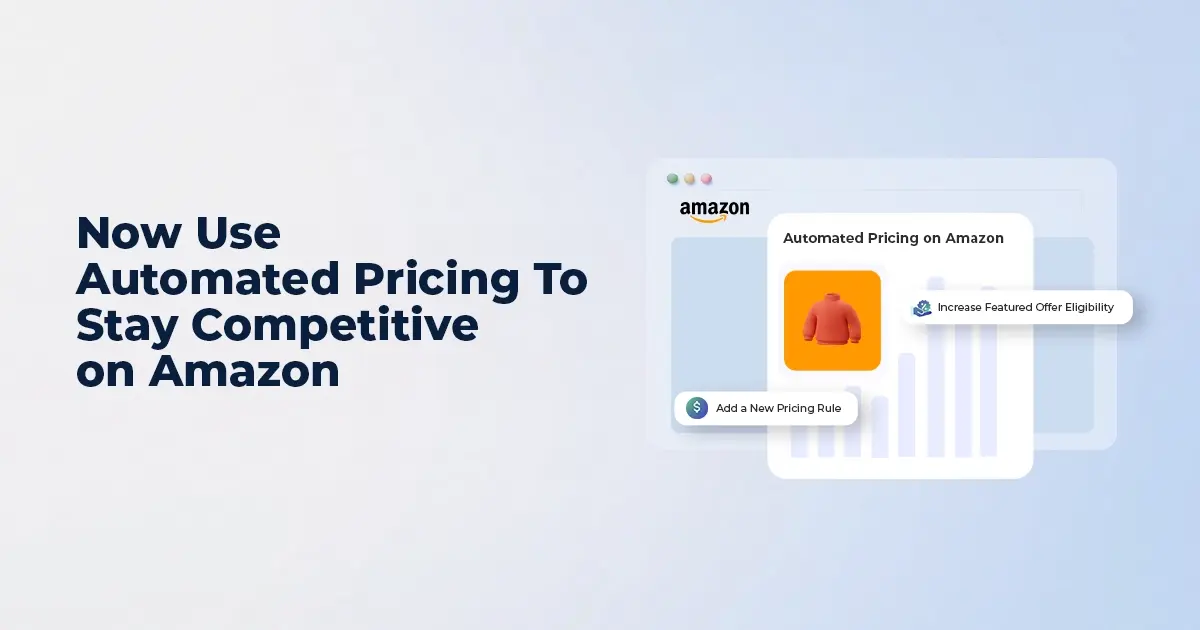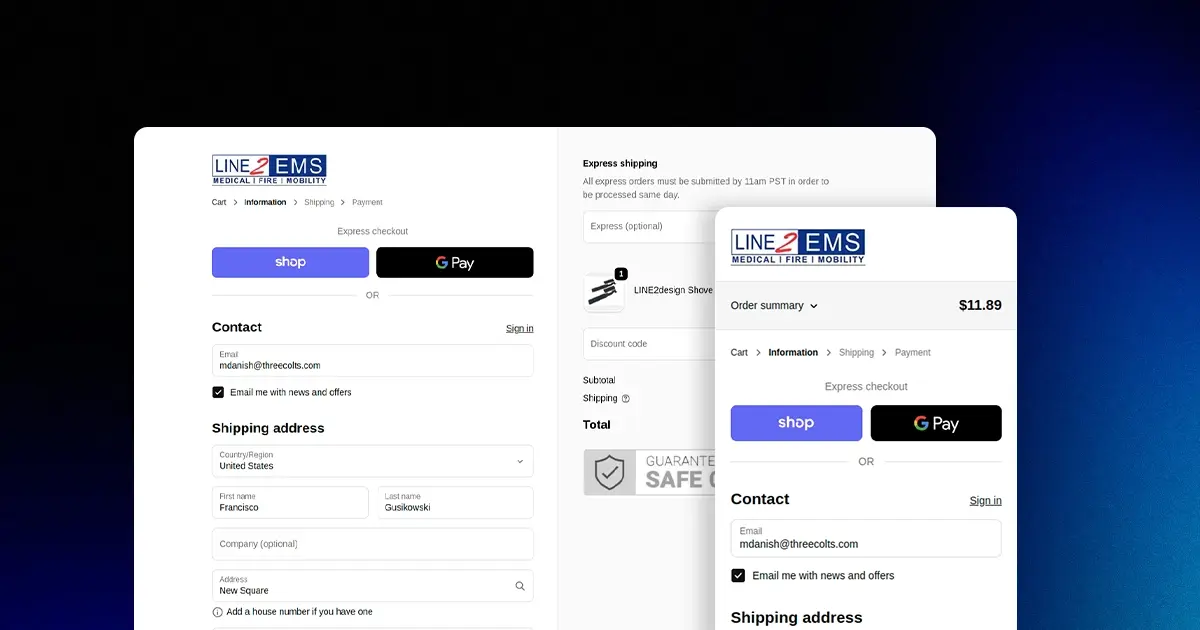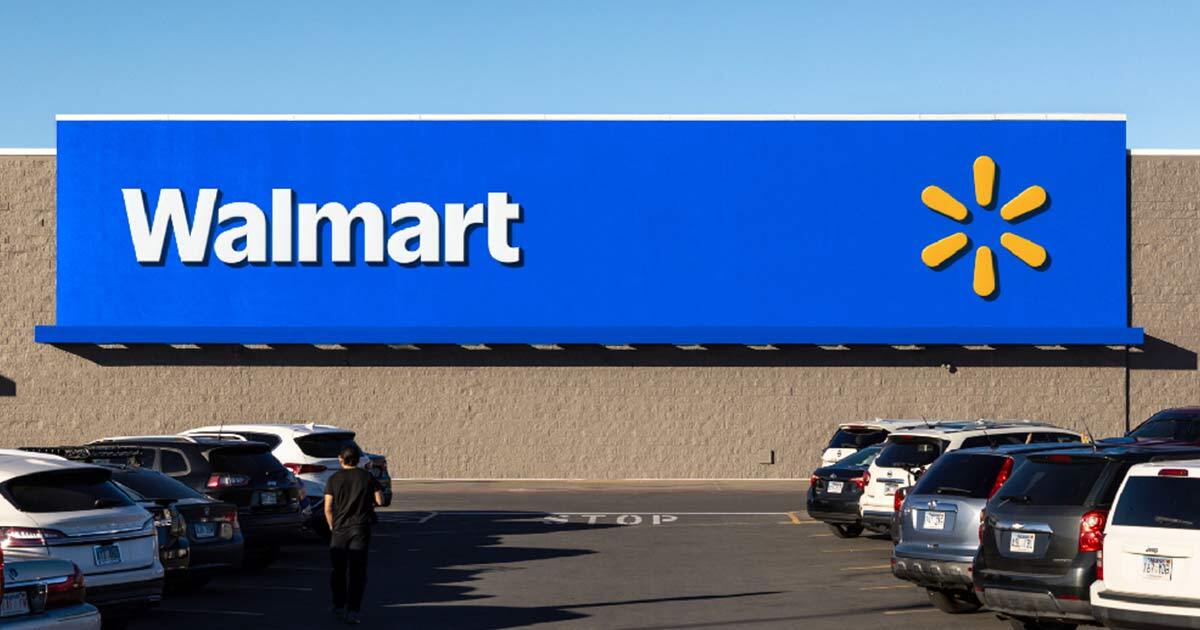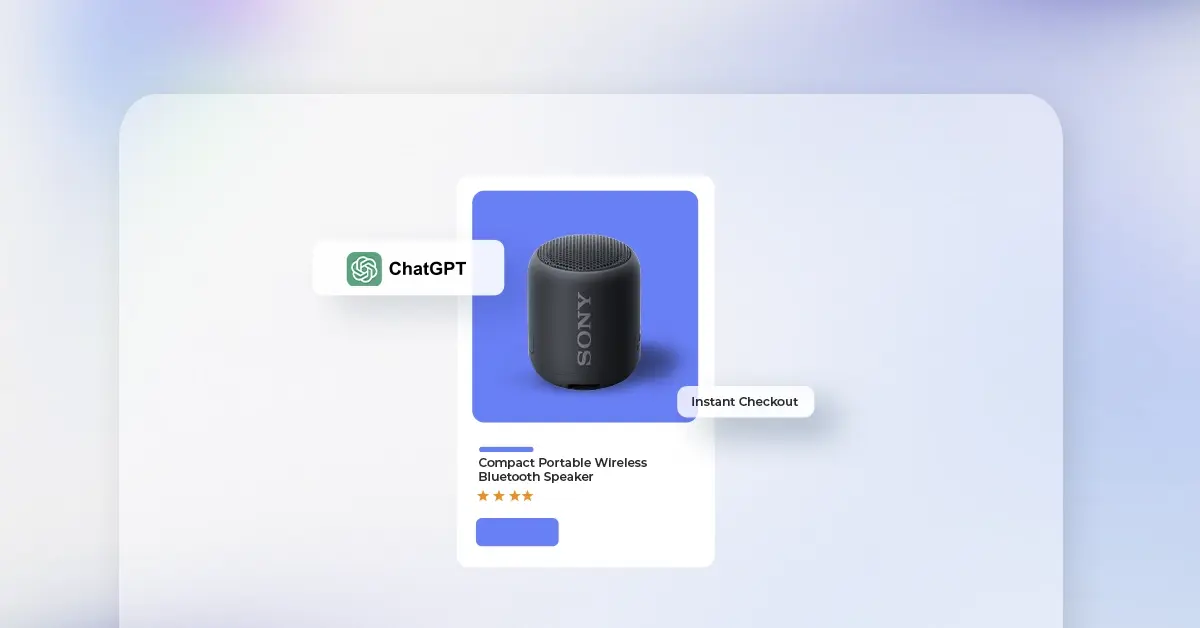What Walmart’s OpenAI Partnership Really Means for Marketplace Sellers
Reading Time: 3 minutesWalmart’s new collaboration with OpenAI signals more than a tech upgrade —…
Amazon marketplace is the 2nd largest company across the globe by revenue and it has successfully secured 6th most profitable company. Over the last 4 years, Amazon’s sales increased by almost $320 Billion (from $292 to $614 billion). Also, a forecast says, the number will exceed 700 billion this year. No wonder why every entrepreneur dreams of owning a website like Amazon. So, let’s take a look at how to create an eCommerce Website Like Amazon.
Table of contents:
Source: Insider Intelligence
From the very beginning, Amazon worked on four of its core principles:
Amazon not only worked on these principles but also approached its vision of being the “World’s most customer-centric company”. Because of this, they have prioritized customer obsession over competitor analysis. Customers in return welcomed Amazon with open arms. Here are a few factors in Amazon that grabbed the buyers’ attention.
To offer customer-centric experiences, Amazon has taken the design to a new level. From easy navigation to access features on each page – buyers get an extremely pleasant experience on their visit to Amazon. Here, have a look at what UX and UI features worked in favor of Amazon:
Another reason behind Amazon’s popularity is the technology used that upgraded the user experience. For this, Amazon uses
All these contribute to an improved user experience while browsing on Amazon. These technologies are reasons why the users experience no lags or very rare lags on Amazon. Additionally, they can virtually try a range of products. AI has the power of tallying users’ previous actions to notify them of similar types of product recommendations and offers. All of these combined bring back the users on Amazon again and again and ensure conversions. Also, these technologies have collectively made registration and checkouts with Amazon.
Adobe Commerce is a carefully designed enterprise solution that offers remarkable experiences in a robust technological environment.
In addition to its design and technologies, Amazon includes flexible returns, refunds, and safe payment options. Since stringent returns and refunds are likely to get customer complaints, Amazon has revised its policies multiple times. It has increased the duration of placing return requests while adding ‘same day refund’ and ‘refund to source account’ facilities.
As Amazon targets a diverse range of buyers with wide product categories, it has added different payment options. Buyers can pay in Cash, cheque, digital payment modes, cards, Amazon Pay, and many more.
As Amazon is a multi-vendor marketplace website, the concerns of buyers and sellers are treated equally here. Security is a common concern for both parties and Amazon has resolved this with AWS cloud security. With this, Amazon monitors the A-Z of activities and protects the data shared.
The main reason why Amazon is this popular and profitable is its simple and transparent business model. It has no hidden terms and conditions for buyers or sellers. They do not need to bear any extra cost for any action. Amazon has a defined rate of selling fees, listing fees, and subscription fees which has no further additions. Due to this, it has gained reliability and sellers are able to execute a profitable business and buyers get what they want.
How does Amazon make money?
The source of Amazon’s income are selling fees, listing fees, ad fees, subscription fees, OTT and Kindle.
As the times are progressing, consumer demands from the marketplace are evolving. They want the marketplace to supply everything they may need. They now find a global marketplace instead of a vertical or horizontal one. Marketplace websites like Amazon have truly fulfilled all their needs. Moving on to numbers, nearly 48% of the shoppers make purchases from eCommerce marketplaces which makes websites like Amazon very profitable.
According to the latest news, Amazon’s net sales grew by 22% compared to 2020. In 2021, Amazon wrapped up its sales to $469.8 Billion in spite of dominant global supply chain distortion. Other marketplaces like eBay and Alibaba have had major growth in the last few years and the only reason behind this is that marketplaces directly cater to the needs of end-users i. e. Consumers. At the same time, marketplaces seem profitable to merchants because they can sell their products from an already popular platform and get all the exposure.
Source: internetretailing
So, there is no doubt that marketplaces are profitable in the present-day scenario. The image above shows the popularity of Amazon among the existing marketplaces globally. Statista has also found that Amazon is the most visited online marketplace globally with 5.2 Billion average monthly visits as of April 2021. This is the reason when someone talks about owning a marketplace, they look for a website like Amazon.
Also, read: Future of ecommerce: The year of Online Marketplace platforms
Right now, you can also get a multi-vendor website like Amazon. Here is how you can create a website like Amazon.
Prepare your eCommerce Store ahead of Holiday Season. Get FLAT 20% OFF on Magento 2 Marketplace Solutions and PWA Theme. View complete offer details!
You have to follow these simple steps to develop a website like Amazon:
To start a marketplace like Amazon, you have to analyze what to sell and whom to sell, to get proper insights. This market analysis will bring out the dominant trends, challenges, threats, and opportunities of your business.
You may choose a vertical marketplace to sell your products or services to limited people. But a horizontal or global marketplace brings more exposure as it lists a wide range of products catering to the needs of diverse buyers.
Check: How to create an online marketplace website like Flipkart?
Once you have identified the products and customers, you have to book a domain name. Your domain name has to be simple so that people can remember it. At the same time, it should be unique to stand out.
Next, you have to choose a platform to host your marketplace website like Amazon. At present, the maximum traffic on marketplaces comes from mobile devices. So, your multi-vendor website like Amazon has to be mobile optimized. For this, you may opt for Magento because of its power-packed adobe features. Being an open-source platform, Magento gives unlimited customizations for your multivendor marketplace website. Also, it fulfills the security requirements for large-scale business operations. A Magento website is capable of handling high-traffic situations in an organized way.
Amazon is excelling in the marketplace industry because of its UX/UI and technical stacks. So, to match this, you have to pick the themes and design of your Amazon-like marketplace very carefully. Make sure that the color palette is not too vibrant or too dull. And most importantly, the theme, as well as the design should complement your store itself.
Next, knit all your pages very carefully –
For a marketplace website like Amazon, an omnipresent advanced search, wishlist, and cart are very important to upgrade customer experience. It will help the buyers to search for anything or proceed with the checkout at any point of their browsing. Here, you will need technical support for the premium quality design of these pages.
Once you are done with the store design, move on to adding buyer features. You can add unlimited features to make your website as attractive as the Amazon marketplace. However, the must-haves are:
Buyers bring more than half of the traffic on marketplaces, so make this buyer features the topmost priority of your Amazon-like website.
Now, a multi-vendor marketplace like Amazon is a platform between buyers and sellers. Amazon-like marketplaces get most of their revenue from their sellers by charging listing and selling fees. So, do not neglect the seller’s features. Here are some must-have seller features:
Basically, the more seller features your marketplace website like Amazon will offer, the more vendors will sell through your platform.
Check: How To Attract Sellers For My Ecommerce Marketplace Website?
Next, come the admin features for your marketplace for the overall management of your marketplace. Here, you can add unlimited features, but the must-haves are
With these, the marketplace administrators can have a better grip on the store and manage it with excellence.
Check: A guide to the commission marketplace revenue model
In a marketplace website like Amazon, shipping and payment options are useful for all stakeholders. So, build partnerships with reliable shipment providers. In case you want to do international business, you will have to be aware of the supply chain glitches that may come your way.
Also, add flexible payment options to your marketplace so that anyone can access it. Some popular payment methods that you can include are:
Now, your store is ready – just run a QA test to understand whether your marketplace website like Amazon is up to the mark or not. QA testing will tell you how smoothly buyer, seller, and admin features are working. You can figure out whether all the payment methods are working or not. Also, you will get a thorough report about the exact issues of your store along with their fixes.
Check: Website as a Marketplace: How to create an online marketplace?
The final step of marketplace website creation is launching and promoting the store. Here, you need to find out the platforms to launch the store to get more audience. Before launching make sure your website is an ada compliant website
The next step is promoting – you can take the help of social media marketing, influencer marketing, video marketing, and ad campaigns. You can take the help of marketing professionals for better guidance on it. All these will help you to boost your eCommerce sales.
Check: How to build trust in your new online marketplace?
Interested in building your own marketplace? It is just a click away.
Moving on to the project estimation of your multivendor marketplace like Amazon. The approximate cost to Create a multivendor website like Amazon is in the range of $30000-$1,50,000. In case, you add an extension to the store, the cost may increase a little bit.
Also, it will take around 6-10 months to create a website like the Amazon marketplace from scratch.
Note: Duration and cost may vary based on the features you want to include in your store.
Read: Marketplace funding
Now, a website like Amazon undoubtedly opens the gate for opportunities, but it will not be a bed of roses. You may come across some challenges.
Amazon has not achieved the peak marketplace position in just one day. It took years and Amazon constantly improved its services to beat its competitors. Today Amazon marketplace is number 1 only because of its technological usage, product variation, and easy usability.
So, while developing a marketplace like Amazon, have a mindset that you are going to face tough competition initially. However, you can gradually improve your services to dodge the competitors.
The pricing issue is another common issue in marketplaces – buyers may get distracted due to inappropriate pricing and to resolve this, you can use pricing tools to set smart prices for the products available on your multi-vendor marketplace like Amazon.
Amazon-like Marketplace websites generally operate on a very large scale and sometimes international services are also offered. As a result, marketplaces may face logistic problems. The global supply chain at present is a bit distorted, so you will have to define processes in the supply chain to prevent delayed deliveries.
Since marketplaces operate on a very large scale, they target different groups of buyers. As a result, marketplaces like Amazon have difficulties in identifying their specific set of audiences. In most cases, different products or categories on marketplaces have different target audiences. As a result, varied marketing tools and strategies are used here.
Again it is a common problem of marketplace websites. While launching, marketplace owners find it hard to understand whom to convince first- the sellers or the buyers. Both parties are equally important to the marketplace and without one party there is no use for the other. Sellers can do business only if there are buyers, on the other hand, buyers will come to your marketplace only if there are enough products. After the initial period, marketplace owners can easily get rid of this problem. Also, there are different approaches (single side, BYO – buy your own demand/supply, etc) to resolve this problem.
There is no doubt that an eCommerce marketplace at present is the gateway to success. Such marketplaces like Amazon receive very high traffic, decent transaction charges, and future prospects. Hence these are one of the most profitable online business platforms so far.
Right now, the Amazon marketplace has almost sidelined all the other marketplaces and has also become the most visited site. It has gained users’ trust by offering them everything they need under one roof – sellers get a curated market and buyers get a wide variety of products in different price ranges. Therefore, buying from Amazon and Selling at Amazon are both prestigious. Hence, everyone dreaming to have a successful online business should upgrade their store to an eCommerce marketplace like Amazon.
There’s yet another way to smooth success. Starting an enterprise marketplace! Click on the link below to get your copy of the enterprise marketplace guide. Dive into the motivations that drive businesses to go online and start an enterprise marketplace.
CedCommerce brings both readymade and custom solutions for eCommerce Marketplaces like Amazon. Our Adobe-certified professionals can develop your site from scratch or modify the existing store with pre-built solutions on Magento.
Our solutions for the open-source Magento enable you to customize your marketplace storefront anytime. For further customization, we have extensions and add-ons to fulfill all your needs. Be it a B2B or B2C platform, without exaggeration, Magento is the best platform for hosting a website like Amazon with its expansive features. Magento PWA is one step ahead of mobile apps with advanced features that make websites dynamic and mobile optimized.
Indeed, it will take some resources and a certain investment to ensure that your website stands out. But, this will protect you from any possible failures that can cost you even more in the future.
Check our Magento Platinum Package
Inkamall is a successful marketplace developed by our Adobe-certified experts on Magento. Here, our task was to build a feature-rich multivendor website for them. Their aim was to upgrade both buyers’ and sellers’ experiences while using the website and our experts bring out these requirements into reality.
Other clients with successful marketplace solutions: Antikolis, and Oneagrix.
Need a website like Amazon? Reach us now and let us know your requirements!!
To create a website like Amazon, it costs $30000-$1,50,000; however, this cost may vary based on your requirements from your multi-vendor marketplace like Amazon.
To develop your own eCommerce website, you can choose Magento and rely on its supportive community. It is an open-source platform that offers you unlimited options for customization for your store. Along with this, it is backed by Adobe, so expect agile features and support for third-party extensions.
To build a premium website like Amazon and Flipkart, you first need to choose a platform. For this, you can totally rely on Magento. Then, you need to work with its UX/UI and add all the features. After adding shipping and payment options, go through QA testing before launching the store.
With the Magento eCommerce platform, you can now easily host a website like Amazon. These websites can either be hosted on-premise or on the cloud. So, it depends on your project requirements to choose either of these.

Reading Time: 3 minutesWalmart’s new collaboration with OpenAI signals more than a tech upgrade —…

Reading Time: 7 minutesI. INTRODUCTION: The Price Precision Imperative In Amazon’s high-velocity marketplace, even a…

Reading Time: 3 minutesAmazon recently announced a significant change for sellers advertising in Washington state:…

Reading Time: 14 minutesBlack Friday–Cyber Monday used to be a weekend. Now it’s a pressure…

Reading Time: 2 minutesKey Updates Shopify is deprecating the “Sell from all locations to all…

Reading Time: 2 minutesWhat’s New Amazon has published a Data Processing Addendum (DPA) for Multi-Channel…

Reading Time: 2 minutesKey Highlights AI-driven traffic to U.S. retail sites will increase by 520%…

Reading Time: 3 minutesDid you know, a new one-tap ordering feature from Amazon is set…

Reading Time: 2 minutesWalmart has overtaken eBay to become the No. 2 U.S. retail eCommerce…

Reading Time: 2 minutesA new step in AI-driven commerce offers merchants direct access to hundreds…

Reading Time: 2 minutesAmazon has officially launched Amazon Haul in Spain, a budget-focused storefront designed…

Reading Time: 2 minutesOpenAI is bringing ecommerce transactions directly into ChatGPT with the debut of…

Reading Time: 2 minutesAmazon has introduced a new FBA multi-unit discount for Amazon Business orders,…

Reading Time: 2 minutesNews Summary At its recent Etsy Up event (September 2025), Etsy unveiled…

Reading Time: 2 minutesNews Summary eBay has rolled out an update that now defaults all…

Reading Time: 2 minuteseBay has announced its acquisition of Tise, a Nordic consumer-to-consumer (C2C) social…

Reading Time: 3 minutesWalmart’s seasonal practices and incentives around holiday shipping have evolved, impacting seller…

Reading Time: 2 minutesAmazon has revised its variation themes policy for 2025. Instead of removing…

Reading Time: 8 minutesEvery sale you make online in the UK comes with a cut.…

Reading Time: 3 minutesHeads-up: eBay is changing what U.S. personal and financial data appears in…
We would like to build a marketplace website similar to Amazon that focus on the dietary supplement space. Our parent company is AMF Pharma LLC located in California. AMF Pharma is a leading supplement manufacture for over 15 years that approved by FDA and GMP. We want to build a mulit vendor marketplace that connect vendors, suppliers, brands and shoppers together.
Hi
Good to know your plans. Do let us know if you need our assistance in making your marketplace website.
Insightful Read! Your step-by-step guide makes creating an Amazon-like website seem feasible. Explaining each step so well!
Hi Alex,
Thank you for your kind words! We're delighted to hear that you found our guide insightful and the steps well-explained.
If you have any further questions or if there's a specific aspect you'd like more information on, feel free to reach out.
Leave a Reply